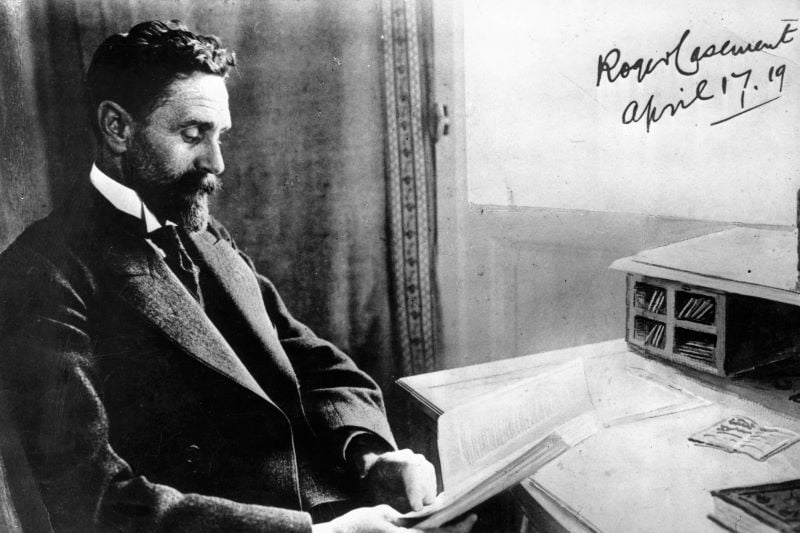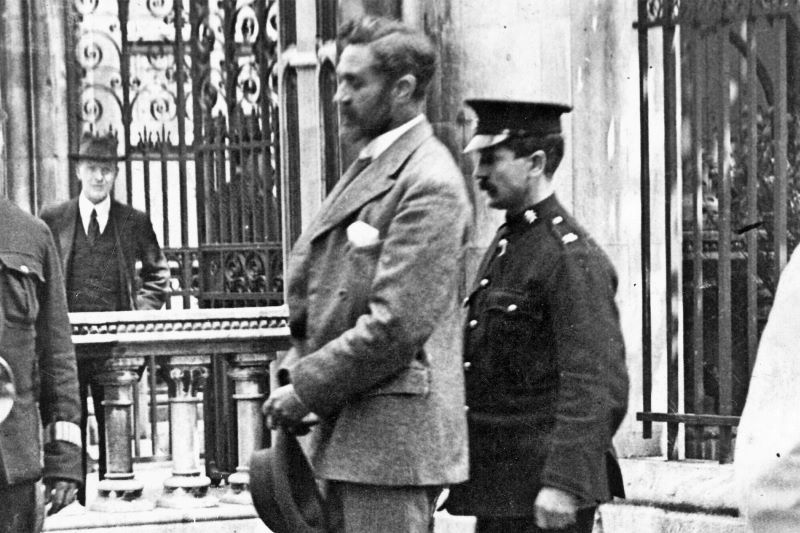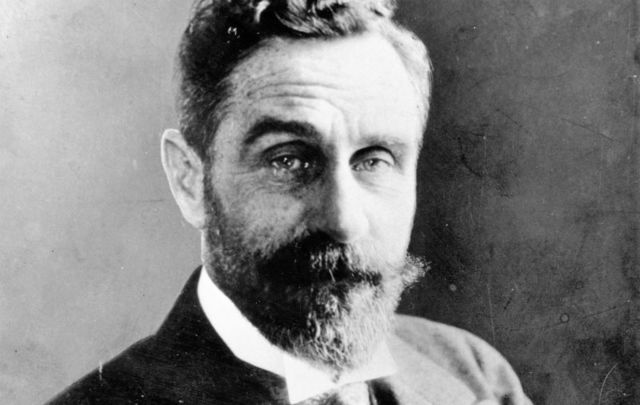YEATS WROTE A POEM ABOUT CASEMENT
BORN ON THIS DAY IN 1864
The Ghost Of Roger Casement
O what has made that sudden noise? What on the threshold stands? It never crossed the sea because John Bull and the sea are friends; But this is not the old sea Nor this the old seashore. What gave that roar of mockery, That roar in the sea's roar? The ghost of Roger Casement Is beating on the door. John Bull has stood for Parliament, A dog must have his day, The country thinks no end of him, For he knows how to say, At a beanfeast or a banquet, That all must hang their trust Upon the British Empire, Upon the Church of Christ. The ghost of Roger Casement Is beating on the door. John Bull has gone to India And all must pay him heed, For histories are there to prove That none of another breed Has had a like inheritance, Or sucked such milk as he, And there's no luck about a house If it lack honesty. The ghost of Roger Casement Is beating on the door. I poked about a village church And found his family tomb And copied out what I could read In that religious gloom; Found many a famous man there; But fame and virtue rot. Draw round, beloved and bitter men, Draw round and raise a shout; The ghost of Roger Casement Is beating on the door.
On This Day: 1916 Easter Rising leader Roger Casement is born
Roger Casement, an Irish revolutionary leader, was born on September 1, 1864. Here, take a look at his life, as well as the only known footage of the Dublin native.
Irish revolutionary Roger Casement was born in Dublin on September 1, 1864.
Sir Roger Casement was the last to be executed of those involved in the organization of the 1916 Easter Rising. The Dublin native was a one-time darling of the British establishment. Of course, that was before he turned Irish Republican.
Casement worked in the British Colonial Service for many years and was knighted in 1911 for his investigation into Human Rights abuses in Peru, but on his retirement in 1913, he became increasingly involved in the struggle for Irish home rule.
When the First World War broke out, Casement hatched a plan to gain German assistance for home rule. He traveled to Germany in late 1914 to negotiate terms and to try and recruit Irish men held by the Germans as prisoners of war.
There are few images of Casement from this time and, up until recently, no video footage of him had ever been revealed.

Roger Casement, circa 1904 (Getty Images)
A documentary on England’s Channel 4 about the First World War included the footage featured below, which is believed to be the only film ever taken of Casement and shows him working at his desk and mailing letters.
Although only 40 seconds in length, the clip is still a welcome shot of one of the giants of Irish history who pledged his life to the country’s freedom.
The documentary clip tells of Casement’s attempt to win German support and how in August 1914 he wrote to the Kaiser Wilhelm II to convince him of Ireland’s commitment to the German cause.
“We draw your majesty's attention to the part that Ireland necessarily, if not openly, must play in this conflict. Ireland must be freed from British control,” he wrote.
“Thousands of Irishmen are prepared to do their part to aid the German cause for they recognize it is their own.”
As a result of Casement’s pleading, the Germans offered 20,000 rifles, if rather ancient, and ten machine guns to the Irish in the hopes of distracting the British on the Western Front.
Convincing the Germans to send him to Ireland with the weapons in a U-boat, Casement planned to halt the rebellion, however, as he feared the number and nature of the weapons they had procured would ensure the failure of a military action.
The mission to deliver the weapons was farcical. They were intercepted by the Royal Navy and Casement was captured on April 21, just hours after landing. Casement’s hopes of calling off the Rising were dashed and he was imprisoned before going through a scandalous trial. He was ultimately put to death by the British for treason.

Irish patriot and British Consular Official Sir Roger Casement (1864 - 1916) leaving the law courts during his trial in London, 1916. He was charged and found guilty of treason after trying to obtain German aid for Irish Independence. (Getty Images)

No comments:
Post a Comment